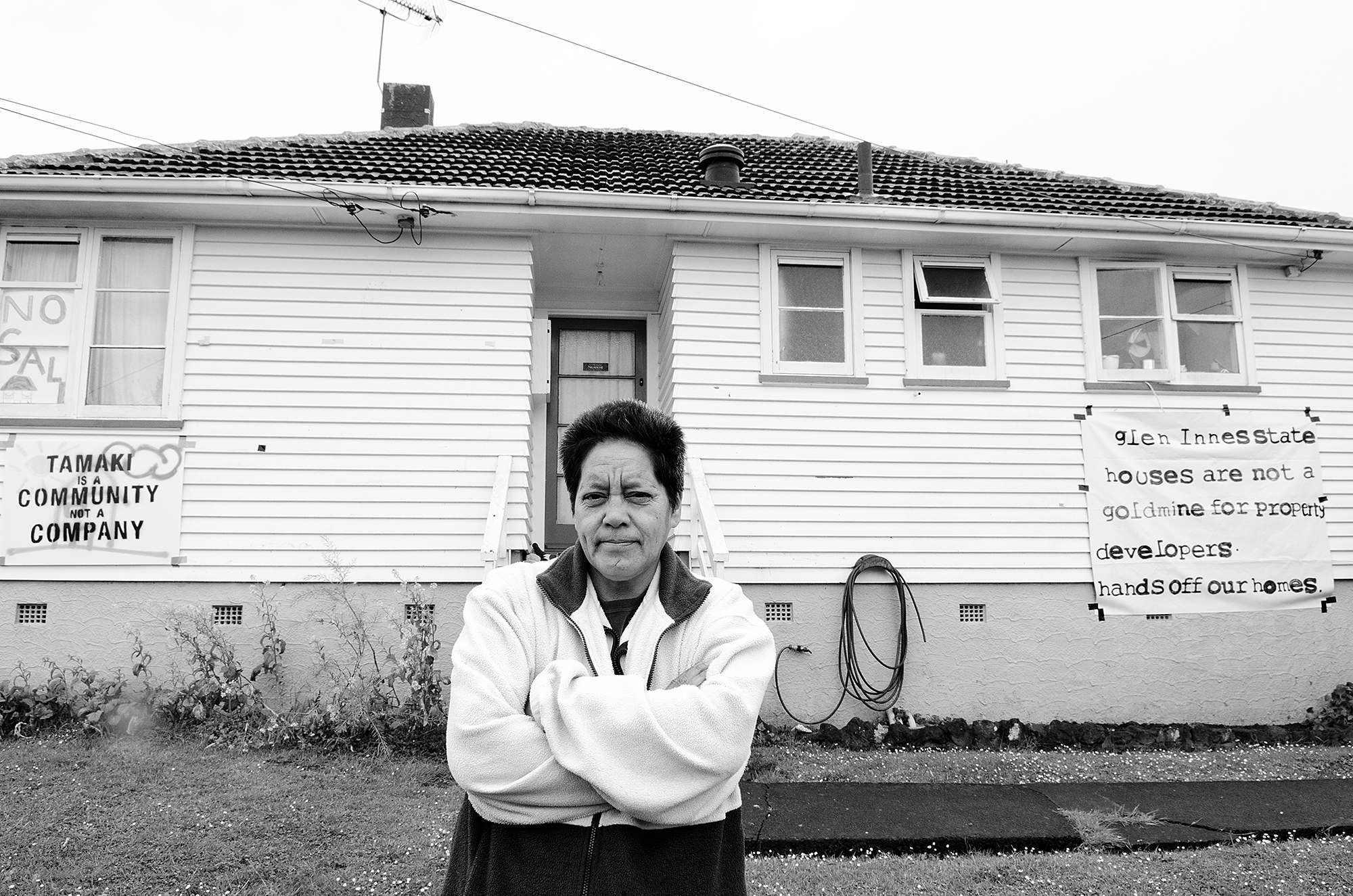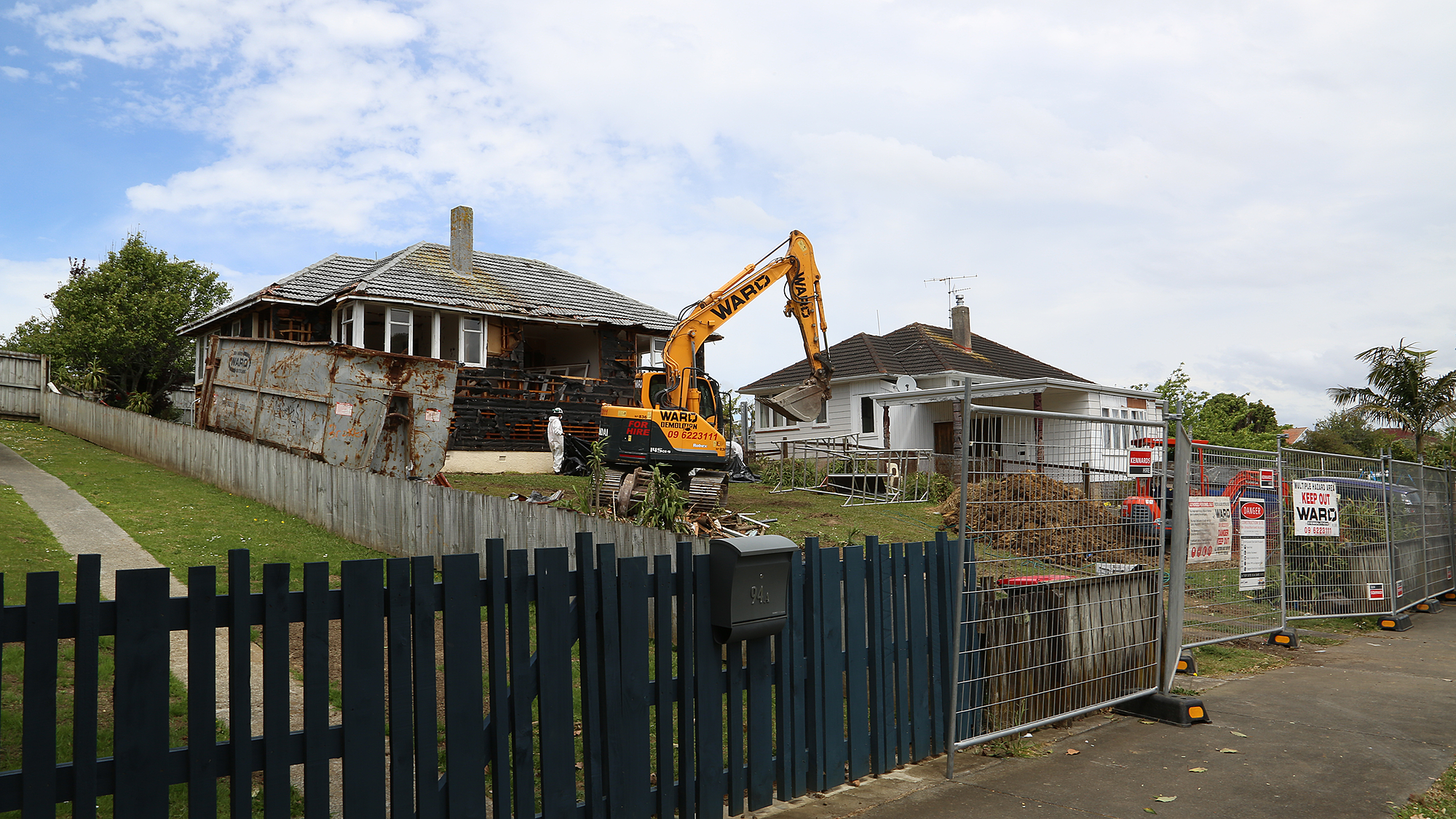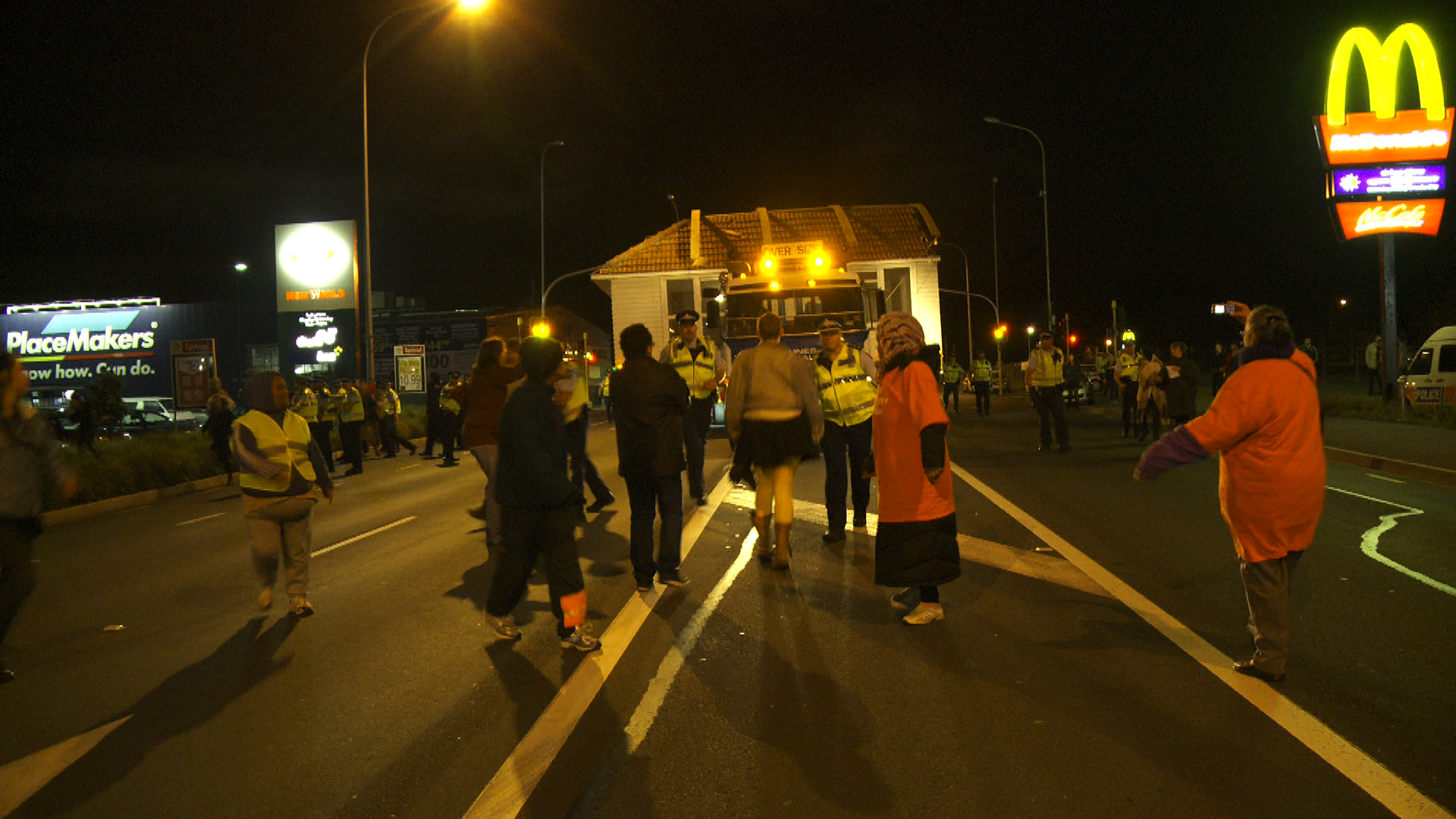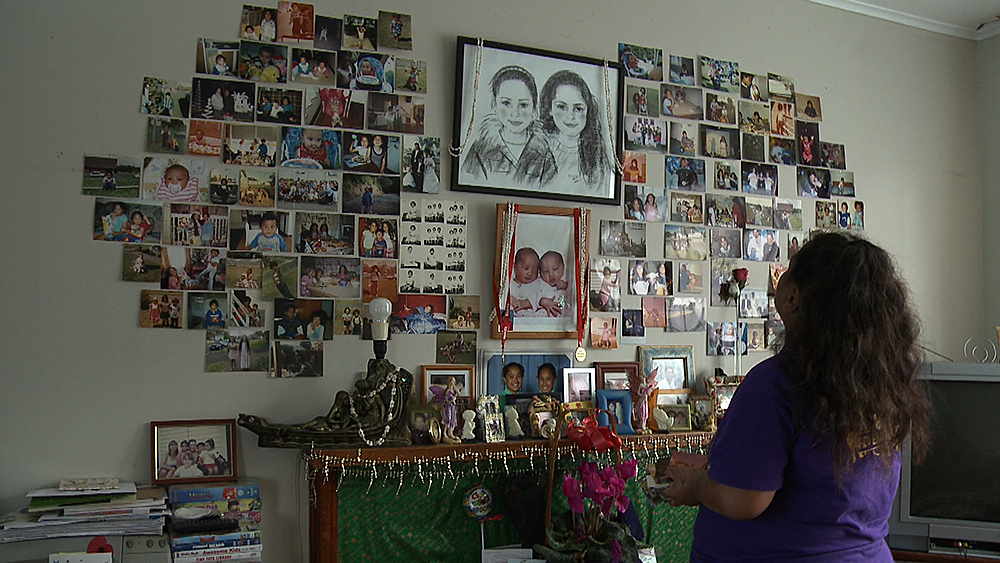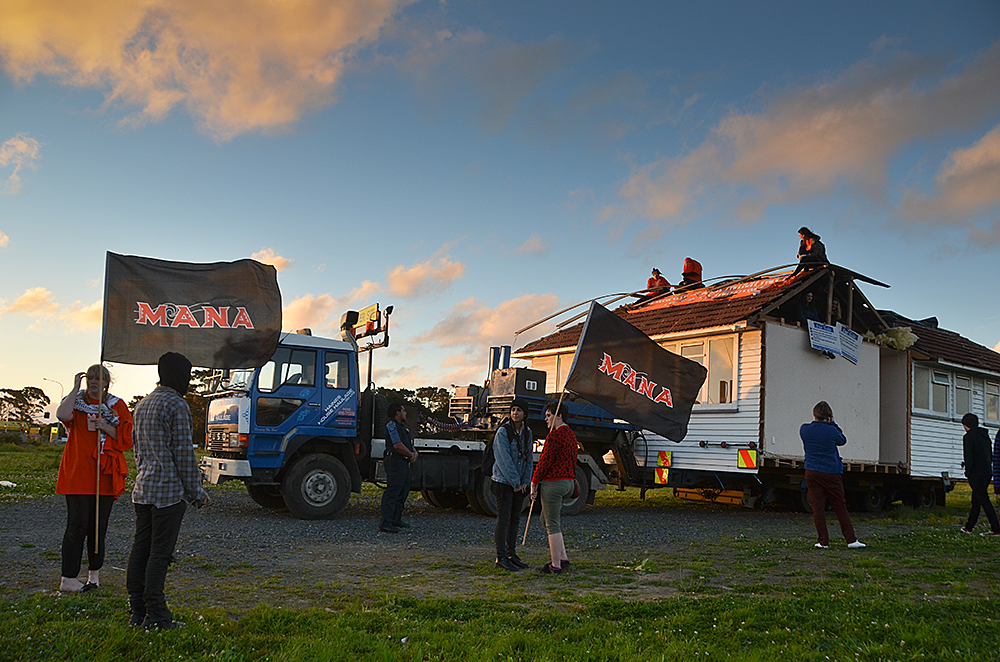A Place to Call Home: An Interview with Briar March
India Essuah chats to Briar March about her new documentary, A Place to Call Home
Among the opening scenes of A Place to Call Home are a series of soft, shallow shots, sketching the minutiae common to cherished family homes. Pinned photographs, piles of bills, worn bedrooms, the bits and bobs that are familiar but can’t be faked; medals won through making it through each day, for years on end, visible only when it’s time to pack them into boxes or leave them behind.
“A camera these days is like a sketchbook,“ Briar March tells me in Q Theatre’s foyer, after a screening of her new documentary. “It’s not a huge investment to go out and play around. You can take a camera out and explore, the same way an artist might make a Marquette – I think I do that too.”
Three years in the making, A Place to Call Home traces the impact of Housing New Zealand’s developments in Auckland’s Glen Innes. The film’s seed was planted when producer Richard Riddiford heard about the state houses that were trundling North to Kaitaia, creating a new community where some of the region’s struggling families could reside. Knowing relocation was a thread that ran through March’s work, he approached her with the idea. They followed the houses’ trail back to Glen Innes where they met a community fighting to be a part of this new policy equation.
The film’s blurb describes it as a struggle between two Māori women: Fleur, who is helping to lead the development in Kaitaia, and Betty, who is protesting the removal of houses in Glen Innes. Watching the film, it becomes clear that Fleur’s story begins where Betty’s ends. Fleur often thinks about the people who once filled the houses delivered to her for rebuilding, but is determined to make the best of a situation that neither woman can truly control. Betty, her family and her community came to be the focus of the film, a choice March made as she saw the story shifting before her.
“Initially I’d hoped to have more of a film that was equally weighted between the two communities – Glen Innes and Kaitaia. Actually, my initial vision was to focus on the house, to make the house more of a character than anyone else and see people moving out of the house and another group of people moving into the house. But that was too difficult; it wasn’t going to happen because the development up North was delayed… I’ve learned that if you’re open and don’t become too prescribed it allows for a more interesting, nuanced story. It feels more authentic because you’re responding to reality rather than trying to fit everything into a typical structure.”
We watch families brave crisp, dark nights to farewell the houses they grew up in, explaining to truck drivers and builders they are there out of love and not to ‘cause trouble’. Grandparents gesture with fragile limbs as they breathlessly worry about their children’s whenua, buried under trees they never thought they’d have to leave behind. Heartbreaking in their sincerity, these scenes convey the instability delivered to the community, letterbox by letterbox.
“It’s easy to think of the people with a state house as lucky. When you go inside the story you understand all of the complexities around poverty and how hard it is to pay the bills and what it means to be able to stay in one place. Those are the things that the film helps us to understand.”
For anyone under the illusion that having a roof over their heads is a promise that will never be broken, it’s unnerving to be shown that this is simply not true. While heartfelt, the documentary avoids easy sentimentality and delivers a potent dose of political and economic insight. March sees the medium as a powerful tool for telling complex stories through human eyes.
“My previous films have been microcosms of macrocosms – I would have just focused on the families living in the house, I wouldn’t go and interview experts or even try and talk about the policies or anything - but in this film I really wanted to. I was a bit confused about what was happening in Glen Innes - a lot of people were - and it would be good to explain that a bit more clearly. It was an interesting hybrid that I’ve never done before, to make something that has political opinions and debates amongst the character story.”*
March’s previous documentaries include There Once Was an Island: Te Henua e Noho, which examines the human toll of climate change. A four-year project released in 2010, the film visits the Pacific atoll of Takuu, where rising sea levels force people to consider leaving their homeland. This story takes places oceans away from A Place to Call Home but the films are linked by their emphasis on security, belonging and the vulnerability that arises when these are threatened.
They also reflect the social concerns that originally drove March to documentary making. After graduating from Auckland’s Elam school of Fine Arts, she won a Fulbright scholarship to the Stanford in the United States. There she completed her masters and developed her knack for making documentaries that illuminate worlds beyond the audience’s own.
“It wasn’t that art doesn’t have an impact, because it does, but the medium of documentary felt right for me. I felt that it had the social impact that I wanted. I’d still like to make some work and put it in an art gallery but I a really love the democratic nature of the documentary film, that it can be put on a video tape, on a DVD, online, downloaded, in a cinema. It’s got this accessibility that an art gallery might not have.”
March explores new ground with each film she makes and has won numerous awards along the way. However, the process itself never gets easier and a new story often means a fresh set of fences. A Place to Call Home saw her treading carefully as she got to know the residents of Glen Innes amid the seismic shifts happening in their tightknit community. “When I first went to Glen Innes, a lot of them didn’t trust me, or they didn’t know how to look at me: Am I media? What am I going to do? Am I going to stick around? So it took me a lot of time to win over their trust and that was really challenging.”
I ask if the roadblocks March experienced went any way in proving that she was delving into something important. Not really, she tells me. They were just plain frustrating. “Housing New Zealand stopped me a number of times. As well as that, I was working with broadcasters who had certain ideas about what I should be filming. I was stopped in many areas actually, there’s no point talking about them all but you just have to realise that if you’re making a film that’s contentious, that’s what will happen.”
Just as the people of Glen Innes were wary of her role, during tenser moments March asked herself the same questions. “I always felt like a bit of an outsider when I turned up to a protest. I understood why they were and there and felt maybe I could have been there protesting. But if I was, I wasn’t just protesting, I was also getting something for my film, whereas they didn’t come away with anything, they just went away hoping that they had made an impact.”
March worked as an editor on films that looked at New Zealand's Nuclear Free protests and the Springbok Tour but she was intrigued to find herself in the middle of a political movement. First-hand footage of Hone Harawira’s arrest during a 2012 protest is one of the more memorable scenes. “This movement in Glen Innes is small but I went there every week, I went to all the meetings – I really got an insight into what that process was like for those protestors. It was an interesting thing for me to witness. I think these people are motivated in the same way I am – they feel a sense of injustice and they want to do something about it. That was inspiring but it also made me think about the ways in which you do it. What’s the most effective way to make an impact? How does my film fit into that?
“I think what it does is it helps to unravel stereotypes. We have stereotypes about someone who lives in a state house, someone who’s a developer. It makes us understand the human realities and conditions that exist around these political changes. What does it feel like to be that person who grew up in Glen Innes struggling with two jobs, who got cancer while trying to save her house?”
With her focus on inequality, March felt she had a stake in the fight the community was putting up. At the same time, she had no interest in puffing up a particular perspective and her fairness comes through in the space she gives to each of her subjects.
In the screening I went to, there were a scattering of scornful laughs each time developer Murdoch Dryden spoke, but these scenes weren’t included as a sarcastic nod to maintaining balance. Rather, March saw the film as a chance for discussion rather than argument. “I really appreciate that Murdoch Dryden agreed to be in the film. He was wonderful and a lovely guy, he’s aware - he says in the film - that developers are viewed like car salesman. I really appreciate his honesty and I wanted his perspective, but I’m also looking at the bigger picture. It’s good to see where he’s coming from because nobody’s evil – they come with their own agenda and there’s validity in their agenda. But, when it gets back to the top level, what are those policies really doing and what is the impact of them?”
Activists are given time to spell out the reasoning behind confronting midnight protests and we also hear of Dryden’s childhood connection to one of the community’s state houses. Policy analysts, builders and school kids are asked for their thoughts and these varied accounts breathe life into potentially dry policy questions. Particularly fascinating is the light shed by Miguel Robles-Duran, a professor of Urbanism from New York. He unpicks the ways developers and politicians rationalise the human impact of new housing on those it displaces, painting the debate with satisfyingly broad strokes.
It’s tempting to find justifications for development in convincingly-crunched numbers and eloquent sound bytes but Robles-Duran fulfills March’s hope of asking: What story are these changes telling us about the way the vulnerable are being treated? It’s clear the answer could never be confined to Auckland; Robles-Duran assures us the same battles are being fought elsewhere.
“Before I had [Robles-Duran’s] interview I wasn’t sure how I was going to tailor my film for an international audience. A lot of people said to me: This is not an international story; this won’t have a life overseas,” comments March. “We often think that our stories are a bit local and they don’t have those international legs but this is not a unique story to New Zealand, it’s a story that’s happening all over the world.” March hopes the film will find its feet in overseas festivals and she’s currently working on a shorter version to screen on US television. The transformations the film works hard to capture also mean its value will come with age as photos and memories of Glen Innes’ original state houses start to fade. "I’m already starting to get requests to screen the film at community and political events and I'm really happy about that because that’s exactly what I’d hoped the film would be used for. I hope that it is looked at again in the future, years from now.”
“I really feel that this film could be a bit of a historical document for New Zealand at this time," March comments, "And I’m really interested to see how it is remembered." We can only hope that New Zealand doesn’t look back on March’s film, on the way our people were evicted from houses that vanished in the dead of night, and regret letting the story unfold the way that it did.
A Place to Call Home screens at Wellington’s Documentary Edge Festival
on the 7th, 10th and 12th of June
